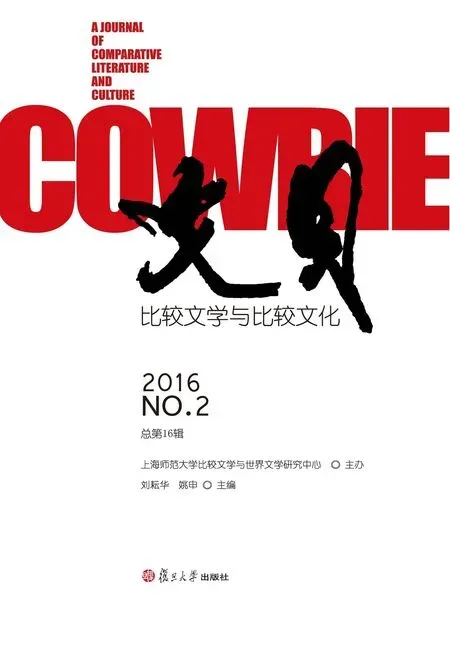注 释 范 例
注 释 范 例
Formatting Guide for Footnotes
1. 文稿中注释一律采用脚注式,全文连续编号,采用数字加方括号的编号格式,即:[1][2][3]……,等等。所引文献须保留作者、书名、篇名、年份、出版社及出版地、页码等基本信息。
When citing sources, footnotes should be used exclusively. They should be numbered consecutively throughout the document (marked as [1][2][3]…)and must follow the style ofThe Chicago Manual of Style. 16th ed. Chicago: University of Chicago Press, 2010.
2. 稿件之注释格式,请参考第3点至第13点之范例。
A guide on how to format citations can be found in items 3 through 13 below.
3. 引用中文专书之范例:
Chinese Books:
孙景尧 Sun Jingyao,《沟通之道》Goutong zhi dao[The Way of Communication](上海[Shanghai]:复旦大学出版社[Fudan University Press],2011),27。
余英时 Yu Yingshi,《士与中国文化》Shi yu zhongguo wenhua[Shi and Chinese Culture](上海[Shanghai]:上海人民出版社[Shanghai People’s Publishing House],1987),36。
4. 引用套书或丛书之范例:
Chinese book/edited anthology:
顾颉刚 Gu Jiegang,《古史辨》Gushi bian[Discussions in Ancient Chinese History],第一册[vol.1](上海[Shanghai]:上海古籍出版社[Shanghai Chinese Classics Publishing House],1981),39。
葛兆光 Ge Zhaoguang,《中国思想史》Zhongguo sixiang shi[An Intellectual History of China],第一卷[vol.1](上海[Shanghai]:复旦大学出版社[Fudan University Press],1998),75。
5. 引用中文单篇论文之范例:
Chinese essays from an edited volume or collection of journal articles:
徐中舒 Xu Zhongshu,〈左传的作者及其成书年代〉“Zuo zhuande zuozheji qi chengshu niandai” [The Author and the Completion ofZuo Zhuan],《中国史学史论集》Zhongguo shixueshi lunji[Essays on the History of Historiography of China],吴泽 Wu Ze主编(上海[Shanghai]:上海人民出版社[Shanghai People’s Publishing House],1980),71。
汤一介 Tang Yijie,〈再论创建中国解释学问题〉“Zai lun chuangjian zhongguo jieshixue wenti” [More on the Establishment of China’s Hermeneutics],《中国社会科学》Zhongguo shehui kexue[Social Sciences in China],1(2000):83。
杨克勤 Yeo Khiok-Khng,〈西塞罗与奥古斯丁的修辞学〉“Xisailuo yu aogusiding de xiucixue” [Rhetorics of Cicero and Augustine],《道风》Dao feng[Logos and Pneuma], 4(1996春):68。
6. 引用百科全书之范例:
Chinese reference books:
《现代汉语词典》Xiandai hanyu cidian[The Contemporary Chinese Dictionary],第4版[4th edition],吕叔湘 Lyu Shuxiang、丁声树 Ding Shengshu主编(北京[Beijing]:商务印书馆[The Commercial Press],2002),词条“意境”Yijing。
《佛学大辞典》Foxue da cidian[Dictionary of Buddhism],丁福保 Ding Fubao编译(北京[Beijing]:文物出版社[Cultural Relics Press],1984),词条“境”Jing。
7. 引用古籍文献之范例:
Ancient Chinese texts:
(晋)杜预 Du Yu注,(唐)孔颖达 Kong Yingda等义证,《春秋左传正义》Chunqiu zuo zhuan zhengyi,见(清)阮元 Ruan Yuan校刻,《十三经注疏》Shisan jing zhushu[Annotations and Commentaries on the Thirteen Chinese Classics ],下册[vol.2](北京[Beijing]:中华书局[Zhonghua Book Company],1980),2107。
(南朝·梁)刘勰 Liu Xie著,詹锳 Zhan Ying 义证,《文心雕龙义证》Wenxin diaolong yizheng,上册[vol.1](上海[Shanghai]:上海古籍出版社[Shanghai Chinese Classics Publishing House],1994),56。
(宋)杨万里Yang Wanli,《诚斋易传》Chengzhai yi zhuan卷17[vol.17],见(清)永瑢 Yong Rong、纪昀 Ji Yun等编纂,《文渊阁四库全书·经部八·易类》Wenyuange siku quanshu[The Imperial Complete Library in Four Branches of Literature in the Wenyuan Chamber],第14册[vol.14](台北[Taipei]:台湾商务印书馆[Taiwan Commercial Press],1986),738。
8. 引用外文著作之中文译著之范例:
Chinese translations:
Aristotle 亚里士多德,《尼各马可伦理学》Nigemake lunlixue[Nicomachean Ethics],廖申白 Liao Shenbai译注(北京[Beijing]:商务印书馆[The CommercialPress],2003),134。
Hayden White 海登·怀特,《元史学—十九世纪欧洲的历史想象》Yuanshixue—shijiu shiji ouzhou de lishi xiangxiang[Metahistory: The Historical Imagination in Nineteenth-Century Europe],陈新 Chen Xin译,彭刚 Peng Gang校(南京[Nanjing]:译林出版社[Yilin Press],2004),256。
Lawrence Venuti 劳伦斯·韦努蒂,〈翻译与文化身份的塑造〉“Fanyi yu wenhua shenfen de suzao”[Translation and the Formation of Cultural Identities],查正贤 Zha Zhengxian译,刘健芝 Liu Jianzhi校,见许宝强 Xu Baoqiang、袁伟Yuan Wei选编,《语言与翻译的政治》Yuyan yu fanyi de zhengzhi[The Politics of Language and Translation ](北京[Beijing]:中央编译出版社[Central Compilation and Translation Press],2000),358。
9. 引用外文原著或外文译著之范例:
Foreign language books or translations:
Benjamin I. Schwartz,The World of Thought in Ancient China(Cambridge and London: Belknap Press of Harvard University Press, 1985), 79.
Roman Jakobson,Language in Literature, eds. Krystyna Pomorska and Stephen Rudy (Cambridge and London: Harvard University Press, 1987),125.
Claude Lévi-Strauss,The Savage Mind, trans. J. Weightman and D. Weightmann (London: Weidenfeld and Nicolson, 1966), 68.
10. 引用外文单篇论文之范例:
Foreign language essays from an edited volume or collection:
Paul Ricœur, “Between Hermeneutics and Semiotics: In Homage to Algirdas J. Greimas”, trans. David Pellauer,International Journal for the Semiotics of Law3.8 (1990): 115-132.
Martin Kern, “Western Han Aesthetics and the Genesis of the Fu”,Harvard Journal of Asiatic Studies63.2 (2003): 383.
11. 同一论著多次引用时,引文与前注出处相同且同页时,脚注用“同上。”,外文著作采用“Ibid.”;引文与前注出处相同但不同页时,脚注用“同上,34。”,外文著作采用“Ibid., 34.”。非连续引用的同一文献再次引用时仅需保留原著者、书(篇)名与页数,如:孙景尧,《沟通之道》,175;或,Tobias, “Canada's Subjugation of the Plains Cree”, 226。
If a footnote refers to the same page as the previous footnote, the abbreviation“同上。” is to be used for Chinese references and “Ibid.” for non-Chinese sources. If the footnote refers to a different page from the same source, the new page number is to be included in the abbreviation. For instance, “同上,34。” for Chinese referencesand “Ibid, 34.” for non-Chinese sources. Reference to a source that has been cited in full form but is not the same as the reference immediately preceding it, can be abbreviated by using the Chinese author’s name (the non-Chinese author’s last name), book or article title, and page number. For instance, 孙景尧,《沟通之道》,175; or Tobias, “Canada's Subjugation of the Plains Cree”, 226.
12. 论文中频繁引用之文献,首次引用之后可以简称随文夹注页码,如:“善政得民财,善教得民心。”(《孟子·尽心上》,2765)。
Sources cited frequently can be shortened to a parenthetical reference after the initial full citations, including the book title and the relevant page numbers. For example,The Firebrand, 102-104.
13. 引用因特网上的资料,须注明检索时间及资料所在站点的详细地址,如:http://shanben.ioc.u-tokyo.ac.jp/main_p.php?nu=A000500&order=rn_ no&no=00001,2013年6月6日检索。
For material garnered from the Internet, authors should include the web address as well as the date the website was consulted. For example, http://shanben.ioc. u-tokyo.ac.jp/main_p.php?nu=A000500&order=rn_no&no=00001, [June 6, 2013].
《文贝:比较文学与比较文化》由国家重点学科—上海师范大学比较文学与世界文学研究中心主办,每年两辑。《文贝》所收录之文章版权为征稿中心所有,除经允许以及研究与教学引用之外,不得以任何形式翻印、重制或转载。
Cowrie: A Journal of Comparative Literature and Cultureis a biannual publication edited by Center for Comparative Literature and World Literature at Shanghai Normal University.Cowrieholds the copyrights of the papers published. No part of this Journal may be reprinted or reproduced or utilized in any form or by any means, without permission in writing from the publishers, except being quoted in research or teaching.
来稿请寄:
《文贝:比较文学与比较文化》征稿中心
国家重点学科—上海师范大学比较文学与世界文学研究中心
上海市徐汇区桂林路100号上海师范大学文苑楼1404室,200234电子信箱:cowrie2012@163. com
电话:021—64328925 传真:021—64322805
http: //cclaa. shnu. edu. cn
All correspondence please address to:
Editorial Office of Cowrie: A Journal of Comparative Literature and Culture
Key Project of China’s Ministry of Education — Center for Comparative Literature and World Literature at Shanghai Normal University
Room 1404, Wenyuan Building, No. 100 Guilin Road, Shanghai, 200234
E-mail: cowrie2012@163.com
Tel: 021—64328925 Fax: 021—64322805
http: //cclaa. shnu. edu. cn

